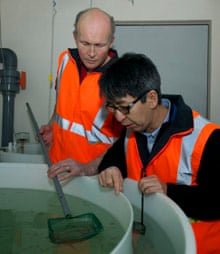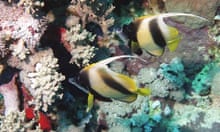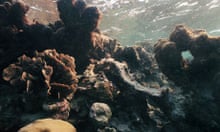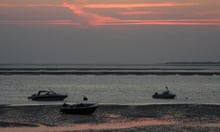I've no idea if anyone has ever done a study to find out if people care more about a particular creature once it's featured in one of those Hollywood computer animated movies.
But let's presume that people do and that the fan base for penguins (Happy Feet), clownfish (Finding Nemo) and ants (Ants) is now considerably larger than it once was.
This would mean that we're all bothered about that cutest of all the cuddly crustaceans, the krill, since actors Matt Damon and Brad Pitt loaned their voices to two of them for the film Happy Feet Two a couple of years ago,
So with sarcasm switch turned on, we are all now obviously right across new research, just published in the journal Nature Climate Change called Risk maps for Antarctic krill under projected Southern Ocean acidification, warning that as oceans become more acidic due to the burning of fossil fuels, krill numbers in the Antarctic could plummet risking ecosystem collapse. The study says:
The data revealed that substantial declines in the viability of major populations of krill in the region may occur within the next 100 years, which is on the trajectory of change that could result in catastrophic consequences for dependent marine mammals and birds of the Southern Ocean.
Krill is the backbone of the food web in the Antarctic and is the key food for penguins, seals, fish and whales. The finding comes as 24 countries and the European Union gather in Germany for a special meeting to consider proposals to create the world's biggest areas of protected ocean in Antarctica.
Between a third and a quarter of carbon dioxide that comes from burning fossil fuels is absorbed by the oceans.
The new study, carried out by scientists at the Australian Government's Australian Antarctic Division (AAD), has found that once levels of dissolved carbon dioxide in the ocean reach about 1250 microatmopsheres, the numbers of krill eggs successfully hatching starts to decline dramatically. Some of the areas for krill already reach 550 microatmospheres.
AAD marine biologist Rob King, one of the co-authors of the study, told me:
If you want to minimise the chances of major ecosystem disruption then this study shows that emissions would need to be moderated from the current trajectory. Antarctica is an unusual ecosystem because this species - the krill - is responsible for passing on so much primary production to higher predators, including fish, whales, seals and penguins.
To carry out the study AAD scientists aboard the icebreaker ship the Aurora Australis hauled in a small catch of krill back in 2011.

The krill were taken back to the government laboratories in Hobart, Tasmania, to mature. There, tanks were set up to recreate different concentrations of CO2 in ocean water and the krill were allowed to spawn.
In Antarctica when mature krill spawn, their eggs sink to depths of between 700 and 1000 metres while they develop and hatch - a process taking less than a week. The hatchlings then swim back up to feed and mature.
But the study points out that higher concentrations of CO2 cause the krill embryos to develop more slowly, meaning they could sink deeper. Rob King explains:
When the sinking eggs hatch they are adapted to be able to swim back up to the surface where they can begin to feed. But delaying their development means they may have to swim further. We don't fully understand yet the capacity of those larvae to extend that vertical migration.
In other words, the krill might just run out of their energy stores before they get back up to shallower depths.
The study also raises some serious questions about the ability of the krill - and the ecosystem it feeds - to withstand multiple changes such as warming ocean temperatures and increased fishing.
Commercial fishing, regulated by the Commission for the Conservation of Antarctic Marine Living Resources, is currently pulling about 200,000 tonnes of the crustacean from the Southern Ocean around Antarctica, mainly from areas around the Weddell Sea. The krill is used in food products, health supplements and as feed for farmed fish.
The study found unless greenhouse gas emissions are cut dramatically, these same areas currently being targeted for krill would be the same areas where krill hatch rates would begin to drop in 100 years time. Mr King said AAD scientists were now studying how krill react when you have more acidic oceans combined with these changing temperatures.
At one stage of the krill's lifecycle, the larvae are highly dependent on habitat created by floating sea ice. Any reduction in sea ice in key krill spawning areas might also have an impact on the amount of krill in the ocean. Mr King adds:
If you put all of these impacts together then it is possible that our predictions on the impacts on the krill population in this study could be conservative.
In Happy Feet Two, Matt Damon's character "Will the Krill" swims out of his swarm for the first time to look back on the orange/red mass as a whale carves through it, swallowing his friends and family.
"Goodbye, krill world," utters Will, in what most will surely hope doesn't join some list of prescient movie quotes.




Comments (…)
Sign in or create your Guardian account to join the discussion